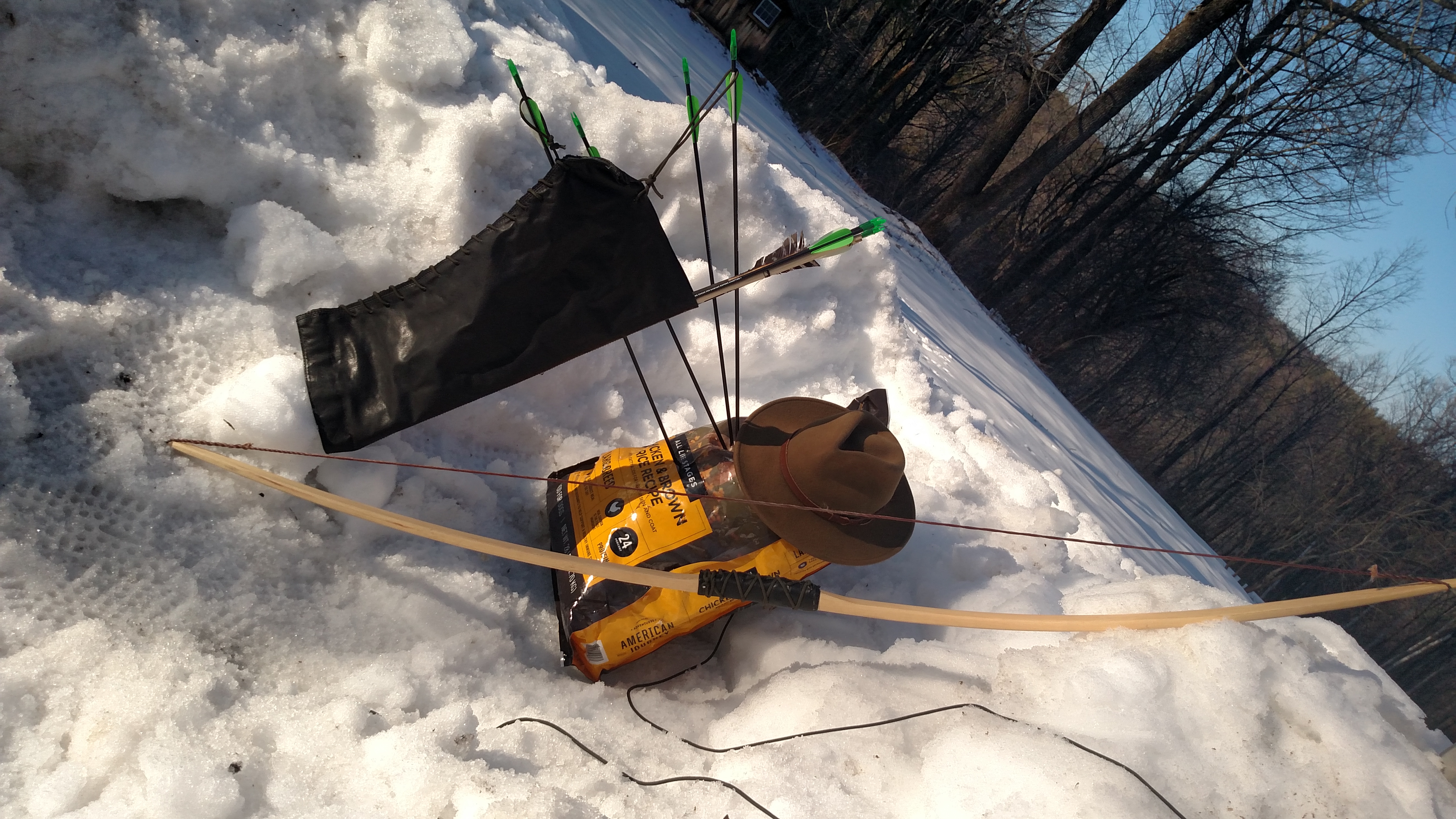Outdoor skills are frequently presented with a big barrier to entry in the form of price tags. Want to go hiking? Most online information you’ll find will start with advising you on the gear you need to buy first. The same ideas apply to most outdoor endeavors you might want to try your had at. Over the last year, archery has become an almost daily practice for me, and I’ll be building an archery target course at our field school come spring. In looking into getting gear to allow students to participate, I realized the cost to someone with an interest in ANY outdoor activity must seem astronomical. Well, how many people go the route of making some, if not most of their own gear?
There’s a lot of pieces about getting started in archery, and only one or two of them mentioned the option of making your own gear. Sure, making a self-bow is a big time investment that might dissuade some folks. I’m of the opinion, however, that there’s a portion of men and women out there who would get even more value from going out stump shooting with a bow they made themselves. Let alone from making the rest of the gear that goes with the sport. My arm guard and quiver are all made from an old leather jacket I found at a thrift store, the bow is from an ash stave I bought online for less than half the price of a retail bow. My target is an old dog food bag filled with the shavings from making my bow. Total cost? Fifty bucks. Sure, maybe the first bow you make breaks after a month, (Like mine did) but there’s plenty of information online, and in books to help you make improvements on the next one.
This isn’t to say there isn’t merit in professionally made gear, but if you’re just getting started and trying to learn the basics, then who cares if you have the “ROBO-ELK SLAYER 600” with a robotic arrow rest that also doubles as a bottle opener? As you participate in the activity, you learn more about your personal tastes in the gear you use, and then can make big purchases with an informed outlook.
So if you’re looking into an outdoor activity and the cost of gear is what’s keeping you from taking the leap, I’d say look a little deeper. Maybe you make your own anorak for winter camping or carve the canoe paddle that brings you downstream. If you’re part of the entire process of the activity, all the way from making the gear to coming off the trail, I’d be willing to bet the experience will be bolstered by it.








